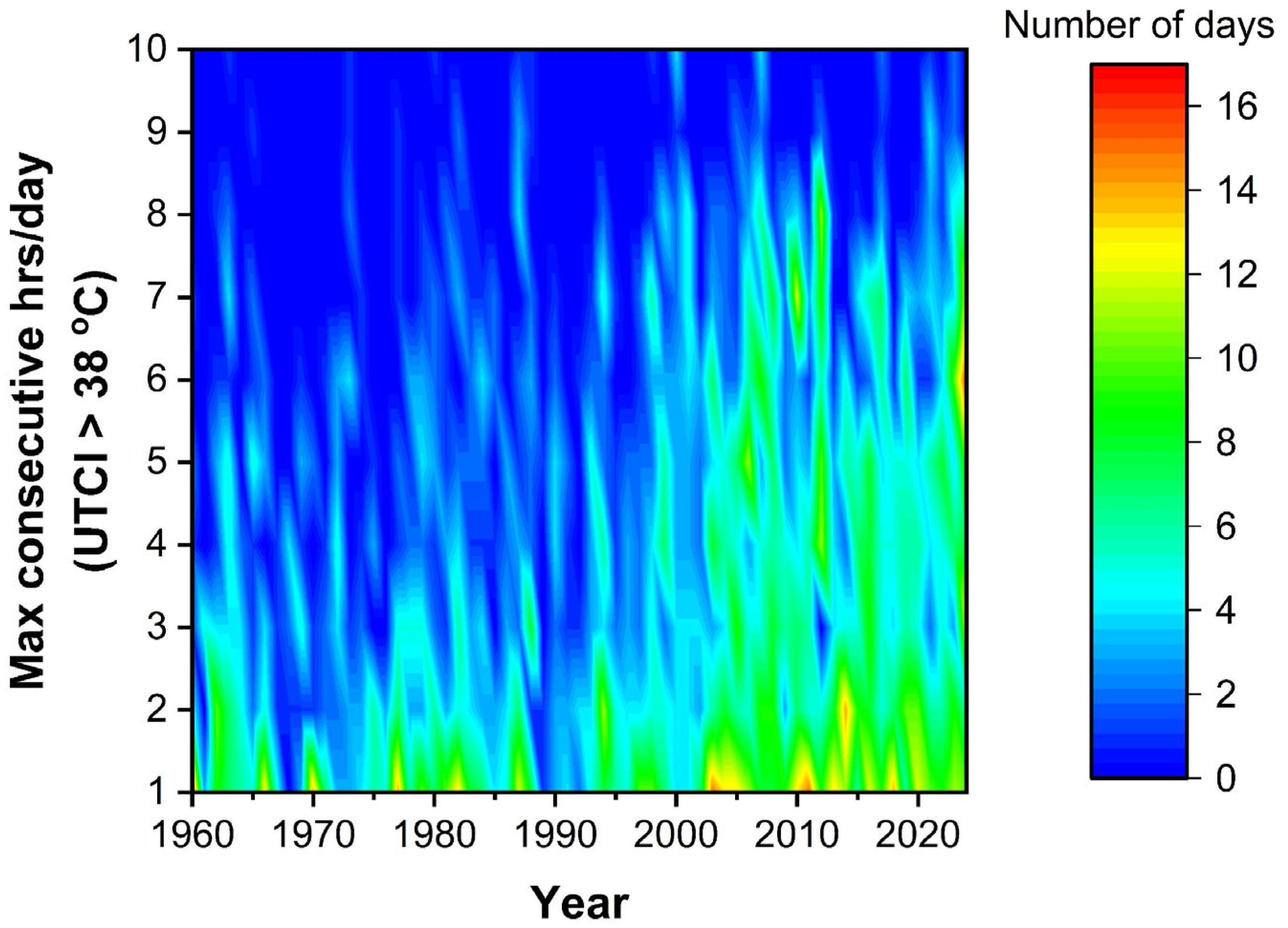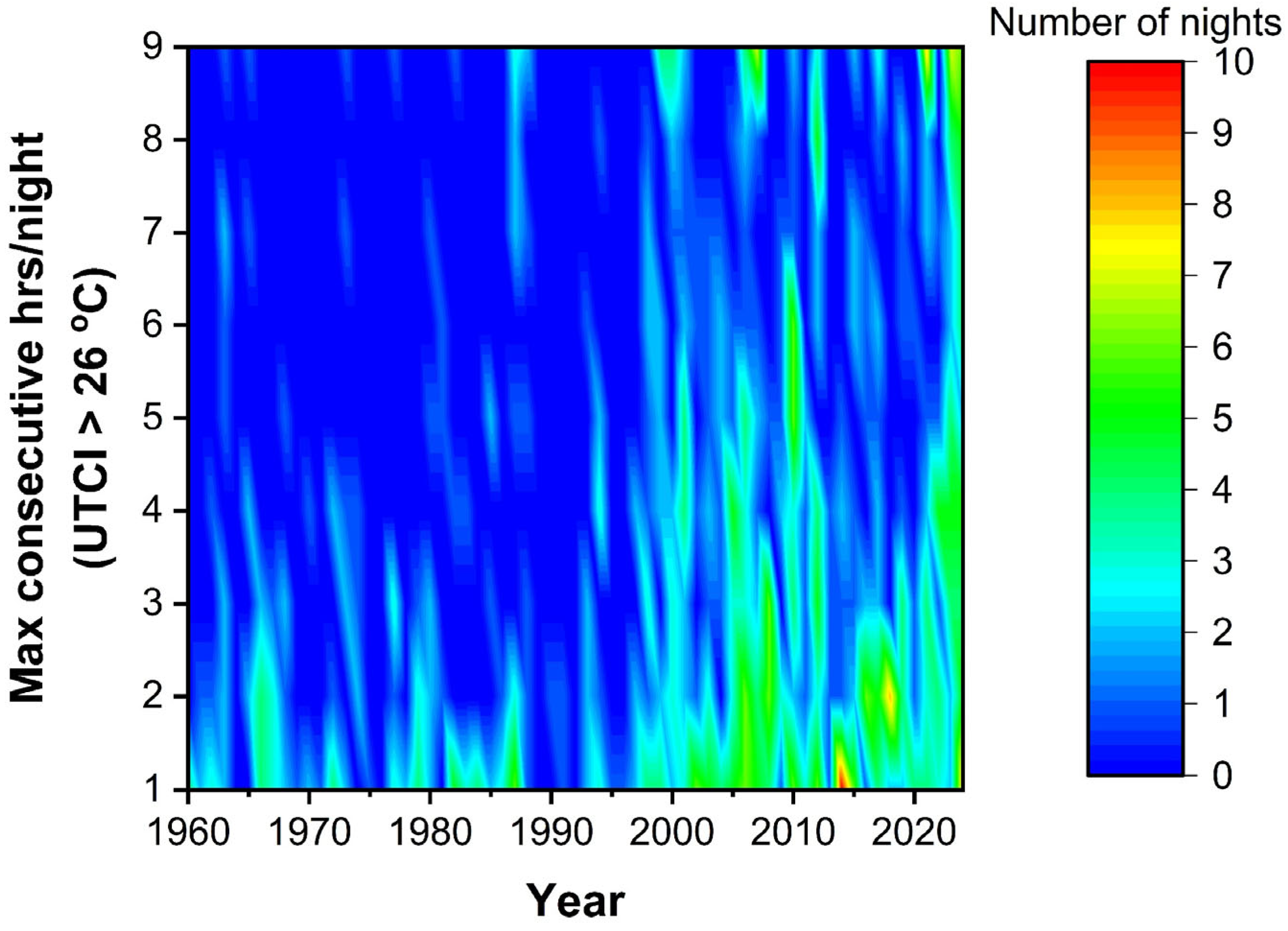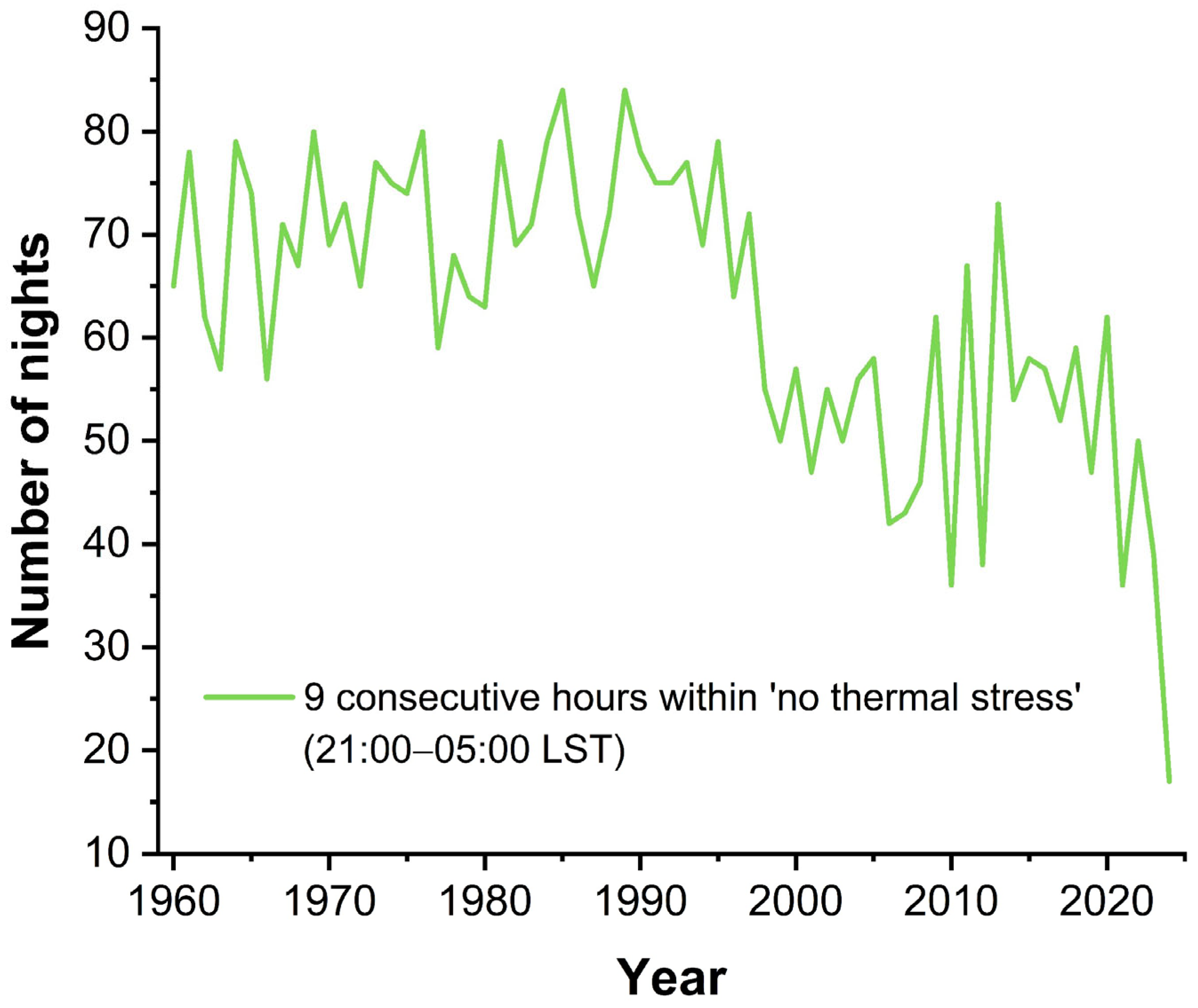Successive Hours of Heat Stress in Athens Based on the Universal Thermal Climate Index (1960–2024) †
Abstract
1. Introduction
2. Materials and Methods
3. Results and Discussion
4. Conclusions
Author Contributions
Funding
Institutional Review Board Statement
Informed Consent Statement
Data Availability Statement
Conflicts of Interest
References
- Founda, D.; Santamouris, M. Synergies between Urban Heat Island and Heat Waves in Athens (Greece), during an extremely hot summer (2012). Sci. Rep. 2017, 7, 10973. [Google Scholar] [CrossRef] [PubMed]
- Bröde, P.; Fiala, D.; Błażejczyk, K.; Holmér, I.; Jendritzky, G.; Kampmann, B.; Tinz, B.; Havenith, G. Deriving the operational procedure for the Universal Thermal Climate Index (UTCI). Int. J. Biometeorol. 2012, 56, 481–494. [Google Scholar] [CrossRef] [PubMed]
- He, C.; Kim, H.; Hashizume, M.; Lee, W.; Honda, Y.; Kim, S.E.; Kinney, P.L.; Schneider, A.; Zhang, Y.; Zhu, Y.; et al. The effects of night-time warming on mortality burden under future climate change scenarios: A modelling study. Lancet Planet. Health 2022, 6, e648–e657. [Google Scholar] [CrossRef] [PubMed]
- Li, A.; Luo, H.; Zhu, Y.; Zhang, Z.; Liu, B.; Kan, H.; Jia, H.; Wu, Z.; Guo, Y.; Chen, R. Climate warming may undermine sleep duration and quality in repeated-measure study of 23 million records. Nat. Commun. 2025, 16, 2609. [Google Scholar] [CrossRef] [PubMed]
- Founda, D.; Katavoutas, G.; Pierros, F.; Mihalopoulos, N. The extreme heat wave of summer 2021 in Athens (Greece): Cumulative heat and exposure to heat stress. Sustainability 2022, 14, 7766. [Google Scholar] [CrossRef]
- 2024: The Year in Which the 1.5 °C Global Warming Target Cap Was Exceeded for The first Time. Available online: http://magazine.noa.gr/archives/5518 (accessed on 2 June 2025). (In Greek).



| UTCI (°C) | Stress Category |
|---|---|
| >46 | Extreme heat stress |
| 38–46 | Very strong heat stress |
| 32–38 | Strong heat stress |
| 26–32 | Moderate heat stress |
| 9–26 | No thermal stress |
Disclaimer/Publisher’s Note: The statements, opinions and data contained in all publications are solely those of the individual author(s) and contributor(s) and not of MDPI and/or the editor(s). MDPI and/or the editor(s) disclaim responsibility for any injury to people or property resulting from any ideas, methods, instructions or products referred to in the content. |
© 2025 by the authors. Licensee MDPI, Basel, Switzerland. This article is an open access article distributed under the terms and conditions of the Creative Commons Attribution (CC BY) license (https://creativecommons.org/licenses/by/4.0/).
Share and Cite
Founda, D.; Katavoutas, G. Successive Hours of Heat Stress in Athens Based on the Universal Thermal Climate Index (1960–2024). Environ. Earth Sci. Proc. 2025, 35, 49. https://doi.org/10.3390/eesp2025035049
Founda D, Katavoutas G. Successive Hours of Heat Stress in Athens Based on the Universal Thermal Climate Index (1960–2024). Environmental and Earth Sciences Proceedings. 2025; 35(1):49. https://doi.org/10.3390/eesp2025035049
Chicago/Turabian StyleFounda, Dimitra, and George Katavoutas. 2025. "Successive Hours of Heat Stress in Athens Based on the Universal Thermal Climate Index (1960–2024)" Environmental and Earth Sciences Proceedings 35, no. 1: 49. https://doi.org/10.3390/eesp2025035049
APA StyleFounda, D., & Katavoutas, G. (2025). Successive Hours of Heat Stress in Athens Based on the Universal Thermal Climate Index (1960–2024). Environmental and Earth Sciences Proceedings, 35(1), 49. https://doi.org/10.3390/eesp2025035049






